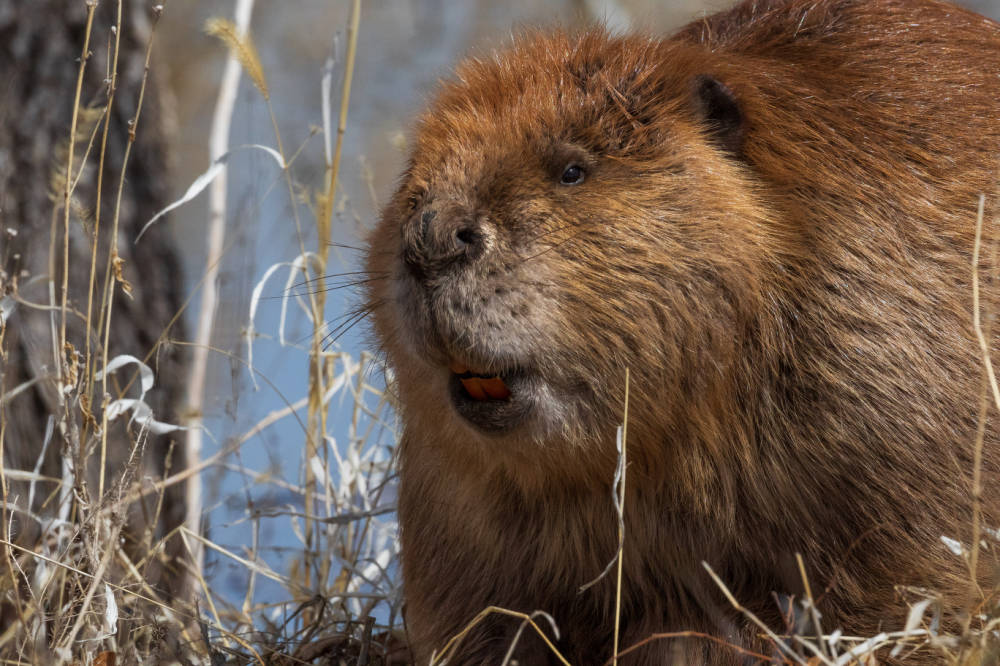The North American Beaver (Castor canadensis) is a true riparian specialist that is fairly common in the mainstem Trinity River below Lewiston Dam. Beavers attracted some of the first European explorers to the Trinity watershed, notably Jedediah Smith, who along with other mountain men traded with local tribes for beaver pelts in the early 1800s.
North American Beaver (Castor canadensis)
The fur trade led to the demise of beavers throughout North America, but they are making a strong comeback following the decline in demand for them. Beavers are still rare in Trinity River tributaries, especially streams draining the high meadows of the Trinity Alps. One of TRRP’s partners, the California Department of Fish and Wildlife, is making a concerted effort to restore beavers because their dam building and other behaviors benefit so many other species (https://wildlife.ca.gov/Conservation/Mammals/Beaver). Perhaps because Lewiston Dam releases are so consistent, beavers do not build dams on the mainstem Trinity River, and in the Klamath Basin they rarely build lodges. Instead, they dig burrows in steep banks along the river.

In the wild, beavers can live for 10-12 years and reach weights of over 40 pounds. They like to live in colonies consisting of an adult pair and their offspring from previous years. These colonies tend to be distributed every mile or so along rivers and streams where the habitat quality and connectivity is good.
If you live near the river and are concerned about beavers falling your riverfront trees, it is a good idea to wrap the trunks with chicken wire to discourage beavers from gnawing on them. Otherwise, the work that beavers do is beneficial and appreciated by a wide variety of animals, including Coho salmon, willow flycatchers, deer, and humans.

James Lee, MS – Implementation Branch Chief
James Lee grew up near Redding, Ca, but his heart has always been in The Trinitys, where he chased tadpoles, salmon, deer, and gold nuggets for much of his youth. This love of the outdoors turned into an interest in managing fish, wildlife, water, timber, and other natural resources.
